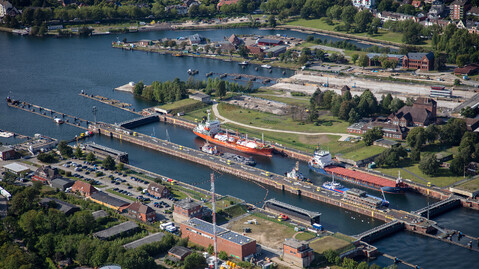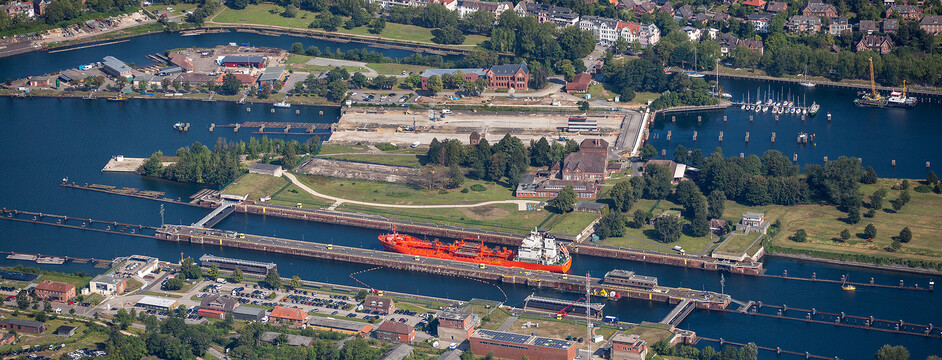
Replacement construction of the small Kiel-Holtenau lock
Starting position
The Kiel Canal is the most used sea canal in the world before the Panama and Suez Canals, and is therefore of great economic importance. Every year, more than 30,000 ships and about 10,000 pleasure boats use the canal. The canal can be accessed from the North Sea via the Brunsbüttel lock system and from the Baltic Sea via the Kiel-Holtenau lock system. The latter consists of the small and the large double lock: 70% of the ships that navigate the Kiel Canal can use the small Kiel-Holtenau lock, making it essential for the smooth operation of the canal.
The small lock was put into operation in 1895 and the large lock in 1914. Due to cracks in the masonry, the structural integrity of the small lock chambers is at risk, which is why they have been shut down since 2014. To stabilise the chamber walls, cofferdams were installed at the lock heads, then the lock chambers were filled with sea sand. This measure secures the lock chambers until their demolition (expected to start in 2023/2024).
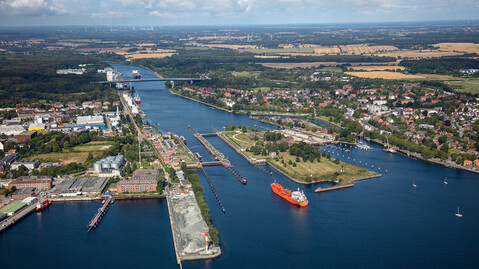
The task
Since refurbishment of the small lock is not possible, a replacement new construction of the lock chambers is being implemented at the existing site. In this course, the usable dimensions of the chambers will be increased, allowing ships up to a length of 155 m, a width of max. 21.5 m and a draught of 8.5 m to use the small Kiel-Holtenau lock in the future. Until the new small lock chambers are commissioned, ship traffic will be handled via the large lock. Following the new construction of the small Kiel-Holtenau lock, the large lock chambers will be refurbished one after the other.
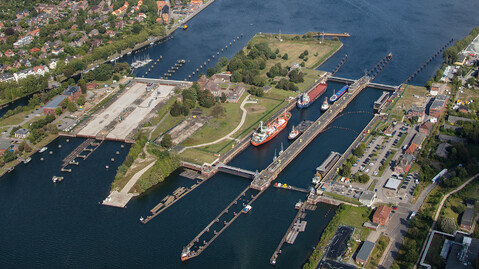
Services
The replacement construction of the small Kiel lock includes, among other things, the renewal of the entire technical equipment. For this purpose, the existing technology will be dismantled and then newly planned and constructed. It is important that the operation of the other facilities and the large lock must be possible at all times, which is why corresponding cables and lines were rerouted and provisional solutions were developed.
In the field of energy technology, the supply of all electrical consumers was planned by connecting to the energy network of the lock system and developing the required low-voltage main and ‑sub-distributions. The energy demand of each consumer was determined for several scenarios and, based on these values, power balances were created. The largest consumers in lock operation are the hydraulic units with 104 kVA per mitre gate. Furthermore, a network structure was developed and an uninterruptible power supply was planned. This ensures continuous power supply to all important messaging and control components.
The lock system is controlled via a programmable logic controller and the drives are controlled via frequency converters. To prevent failures, the central control will be executed redundantly. It is planned that the small lock will be controlled from the control stand of the operations building. A joint control centre for the large and small lock is envisaged for the future.
Furthermore, the traffic light system was planned according to WSV (Federal Waterways and Shipping Administration) specifications, taking into account the specific conditions for the Kiel Canal, and a camera concept for the video technology of the GDWS (Directorate General of Waterways and Shipping) was implemented. The loudspeaker/intercom system is also part of our planning contract, enabling communication between the operating staff and the shipmaster. To determine the water levels in the Kiel Canal, in the fjord and in the respective lock chamber, water level measurement stations and an operational water level system are used. Additionally, a lighting system was planned according to WSV requirements and a lighting calculation was carried out. Here, the requirements for outdoor, indoor and safety lighting were considered. The topics of lightning protection, grounding and potential equalisation were also addressed by developing a corresponding concept. The performance of the risk assessment according to the Machinery Directive was also part of the contract.
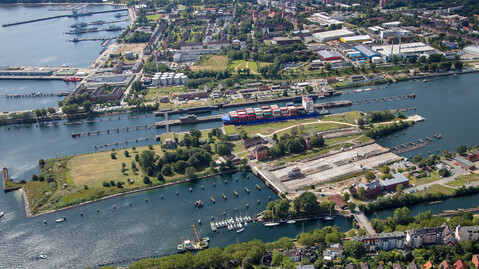
Challenges and special features
To gain experience in handling projects according to the BIM method, the planning community decided to provide the planning services for the replacement construction of the small Kiel-Holtenau lock according to the BIM working method. Thus, all information is available digitally at the end and a cross-disciplinary digital building model has been created. The insights and solutions developed are essential for future projects and offer planning offices the opportunity to work closely together with fewer interfaces.
A challenge in this project is to ensure the smooth continued operation of the large lock during the demolition and new construction of the small lock. To enable this, provisional solutions were planned and necessary cables and lines were rerouted.
